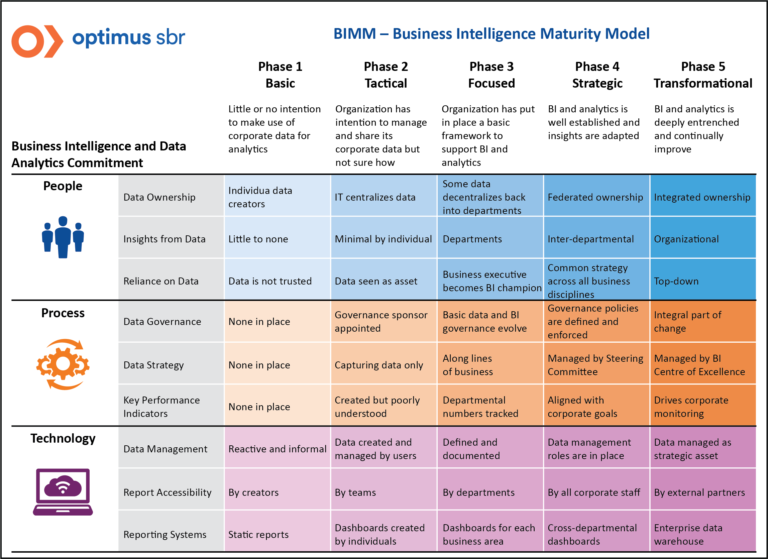If your organization is having difficulty deriving greater insight, understanding, and intelligence from your data, you are not alone. Data is everywhere. But accessing, organizing, and making sense of it can be daunting.
Better Data Means Better Decisions
It’s clear that readily available, up-to-date, data-driven intelligence leads to better decisions and ultimately to better business performance. Yet many companies are far from having business intelligence that can inform strategic decision-making across the company. This is often due to their inability to access and integrate data from multiple source systems. It’s not as simple as importing data and analyzing it. Rules must be established that govern who can do that, how it’s to be done, and what questions should be asked of the data.
Although most companies attempt to take advantage of data repositories, results vary. The least sophisticated environments have data scattered across different, disconnected, spreadsheets and documents. Employees may not get the information they need because it’s not organized or available in a consumable format. Furthermore, the data can’t easily be shared, and no one is in charge of data governance. Environments at the other end of the maturity spectrum have systems in place to ensure that data is organized, curated, and accessible to all levels of staff in the form of actionable dashboards.
The ultimate goal for decision makers is to have trusted data at their fingertips that will facilitate information-based decisions. The first step in becoming more data driven is to build a roadmap indicating where you are in terms of the organization’s business intelligence maturity and where you want to be. The roadmap should reveal what you are doing well and what areas need improvement, where you need to go next, and how to get there.
Business Intelligence Maturity Model
There are many business intelligence maturity models available that help you identify how mature your data and analytics strategy is, and where you eventually want to be. But they often lack guidance on how to get there. Our team of data experts created Business Intelligence Maturity Model (BIMM) in response to customers who asked us for a maturity model that would show them what they need to do to get to the next stage of business intelligence maturity.
Our Secret Sauce
BIMM is different than other maturity models in that it’s an interactive roadmap that is task-based, detailing specific assignments and accomplishments to reach the next phase of maturity. Tasks and functions are either completed or not, and the next milestone is clearly outlined.

BIMM directs the user through five progressively advanced phases of activities and implementations – Basic, Tactical, Focused, Strategic, and Transformational. They are intersected by People, Process, and Technology. It’s critical to recognize that all three of these elements are required because the diminished standing of one will cause BI systems to fail.
A Final Thought
If the ultimate goal for decision makers is to have trusted data at their fingertips to facilitate information-based decisions, then an action-oriented guide to get them there is a critical first step in that journey. BIMM helps organizations create a detailed roadmap to progressively increase their business intelligence maturity, allowing them to better leverage data to make smarter decisions.
Optimus SBR’s Data Practice
Optimus SBR provides data advisory services customized to support the needs of public and private sector organizations. We offer an end-to-end solution, from data strategy and governance to visualization, insights and training.
Contact Us for more information on our Data practice and how we can help you on your data journey.





Industry Insights
Service Insights
Case Studies
Company News